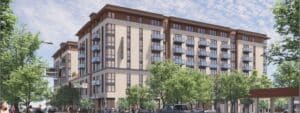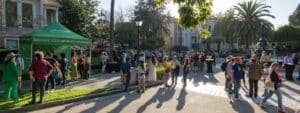Daisy Pistey-Lyhne
ON NOV. 4, Marin County voters have an unparalleled opportunity to vote for the environment. By voting “yes” on Measure Q, for the Sonoma-Marin Area Rail Transit train and bicycle-pedestrian path, North Bay residents can protect the greenbelt from development and also address climate change — one of the most profound challenges of our time.
Marin County has historically done an excellent job of preserving open space and farmlands. To continue this environmental tradition, it’s time to focus on our carbon footprint. Here in the North Bay, our tailpipes have an outsized impact on the climate. More than 60 percent of our greenhouse gas pollution comes from vehicles — more than the statewide average. That’s because today, we have few or no alternatives to driving.
With Measure Q, we can change that.
SMART will remove at least 5,300 car trips per day, largely from Highway 101, to cut our greenhouse gas emissions by a whopping 31 million pounds per year. With high gas prices, even more people will choose to ride the train.
That is also because more people will live here — whether or not Measure Q passes.
By 2020, according to the Association of Bay Area Governments, there will be 80,000 more people living in the North Bay. That includes our children as well as people who will move here.
Without SMART, all these people will be in cars, in traffic, on 101.
SMART will give us more options. Already, the vast majority of North Bay residents live within a few miles of the train line. Already planned homes in areas like Hamilton and the Fireman’s Fund campus in Novato will be walking distance from train stations. This will mean more people can use the train instead of driving, and they will: people who live and work walking distance from transit are 10 times more likely to take it than those who live farther away.
Measure Q is also the right choice for traffic relief.
Opponents have suggested buses instead of a train. But buses sit in traffic just like cars, unless they get their own lane on the freeway. Widening the highway is not a real solution. It would mean more driving, more greenhouse gases and more sprawl development — and it wouldn’t even relieve traffic. On average, in California, widened highways fill again in just five years, and drivers end up where they started: in bumper-to-bumper traffic. Highway widening requires 7 to 12 times more government subsidy per mile than SMART and paves over miles and miles of land — not an environmental choice.
Measure Q is the right choice for the environment.
Some have raised concerns about SMART’s environmental impacts. This must be put in perspective: If we do not invest in real solutions to address climate change, we will lose far more than 30 acres of wetlands. We will lose vast areas of wildlife habitat and whole species to rising sea levels and changed weather. Climate change is going to mean tough choices.
SMART will provide solutions long into the future. It is the linchpin of the broad strategy we need to improve our transportation system and address climate change.
Vote “yes” on Measure Q to create greener transportation solutions. We simply cannot afford to miss this opportunity.
Daisy Pistey-Lyhne is the Sonoma-Marin field representative for Greenbelt Alliance, a Bay Area conservation organization.
###



